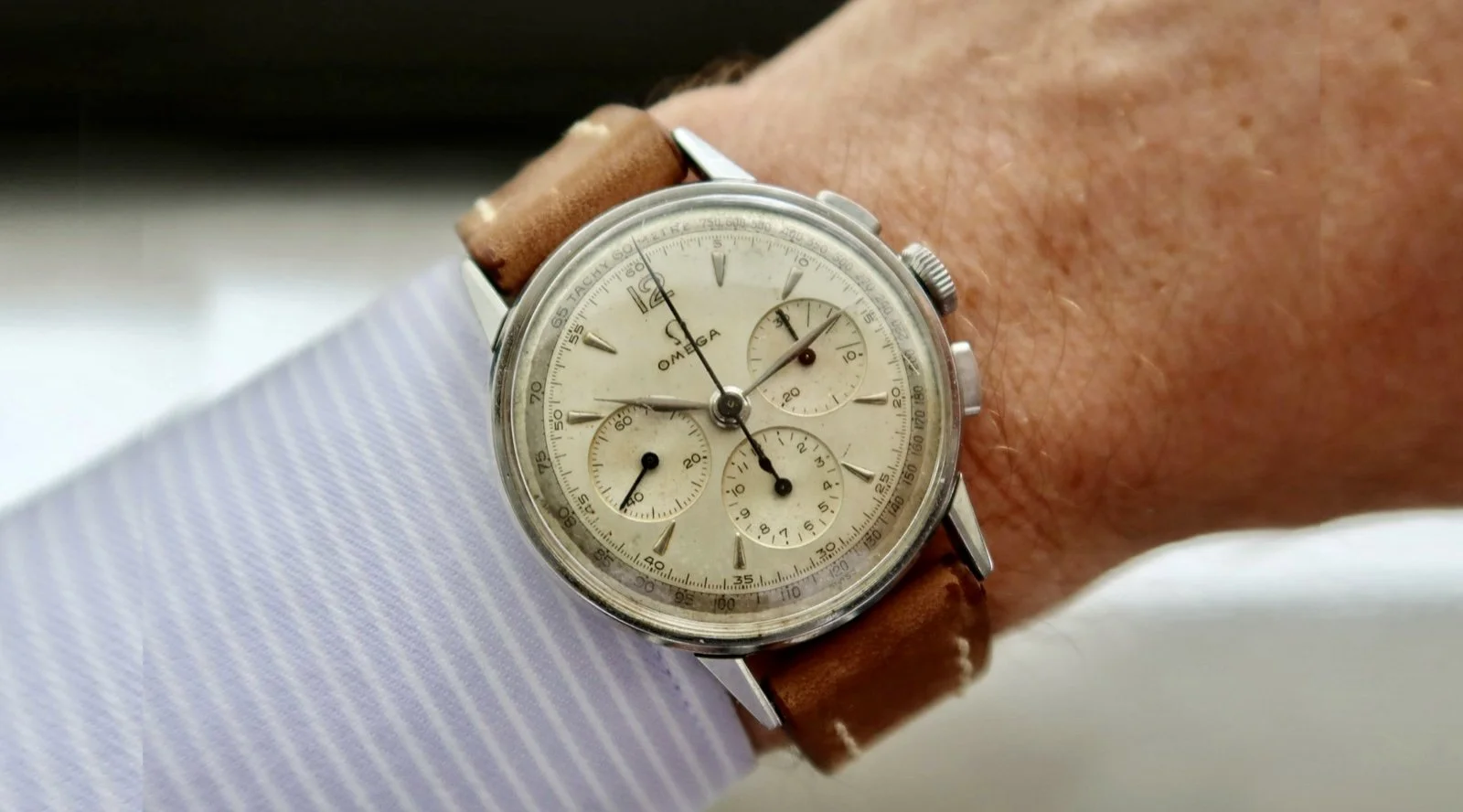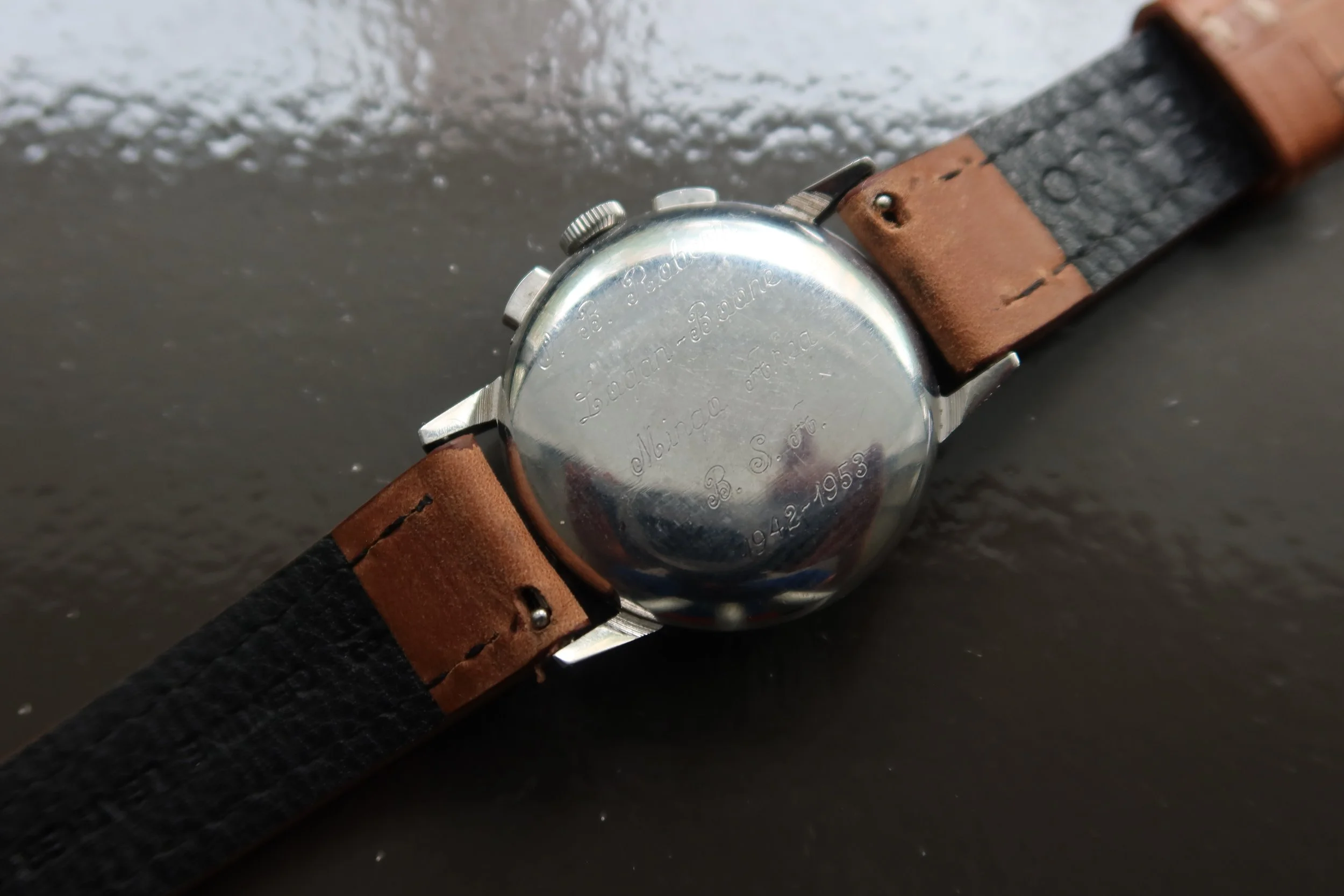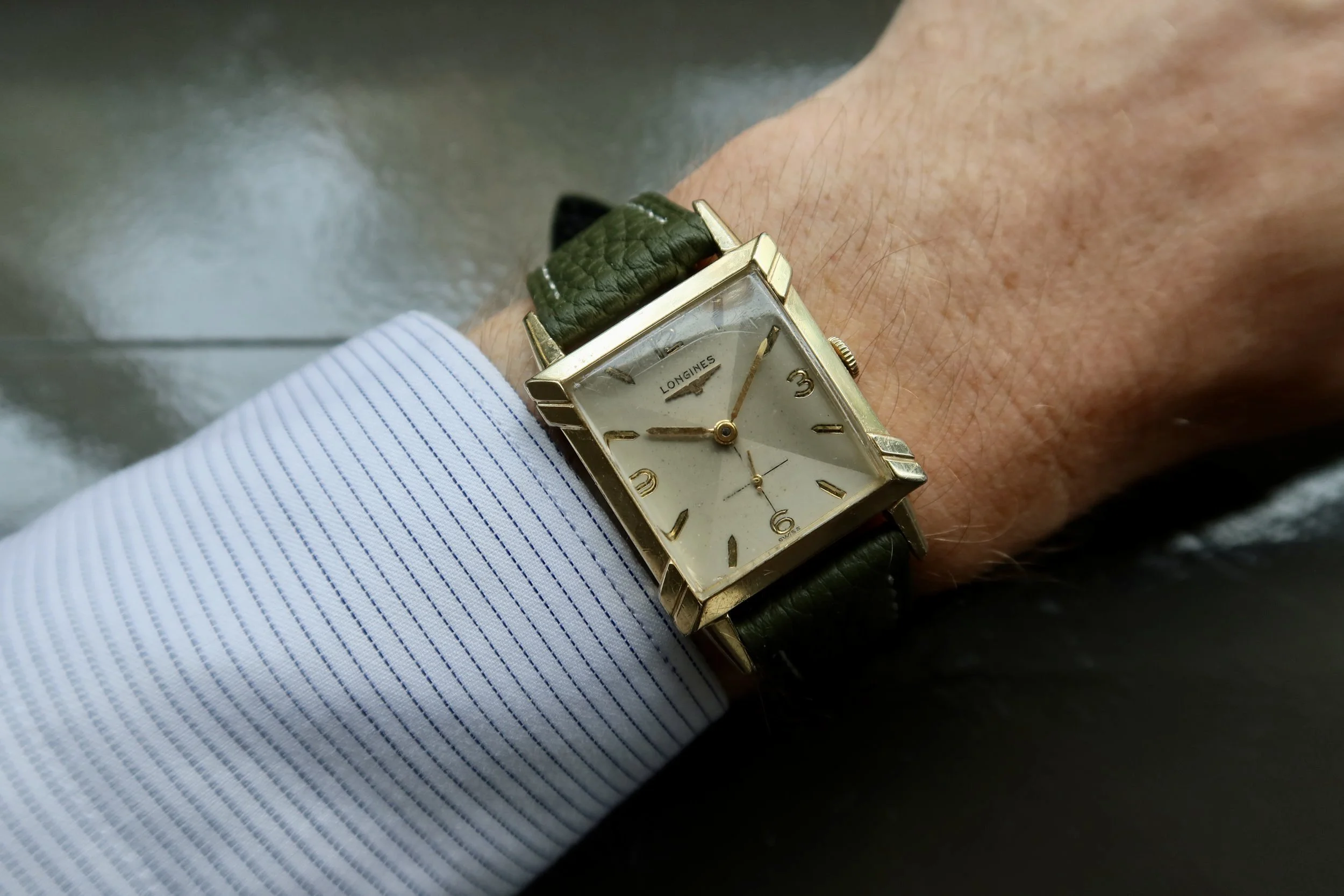The 1950 Omega Chronograph Reference 2279
When collectors consider what were the greatest, or most revolutionary movements every produced by any watch company, many will point to the famous caliber 321 manufactured by Omega. This movement was of course used in the original Omega Speedmaster models that went to space. The reference 2998 was the first Omega to reach space, strapped to the wrist of astronaut Walter Schirra who wore the watch during the 'Sigma 7' mission of the Mercury Programme in 1962. But many forget that Omega produced chronographs before the Speedmaster, that in their own right, led to the Speedmaster models that collectors hold in such high regard. And even more interestingly, these ‘pre-Speedmaster’ models used the same caliber 321 movement.
One of these chronograph references that came before the infamous Speedmaster models was the reference 2279. This reference was launched in 1943 and was produced through to 1957. What must be remembered is chronograph watches were produced in fairly low quantities during this era compared to other models most brands carried, making the reference interesting from a rarity perspective. It appears through research that there were 4 iterations of the reference produced, which are shown by the numbers after the reference number. For example, the 2279 today is the reference 2279-4, meaning the last iteration of the reference.
Before diving into the importance of the movement, the reference is important to speak about. The reference 2279 has a 35mm case that is made up of three pieces with a removable bezel and snap on case back. The case is not water resistant, so finding 2279’s in pristine condition is often a challenge today. The reference was produced in a variety of configurations, the most classic being the version with a tachymetre counter around the outside of the dial. Other variations have come to market with pulsometer dials and spiral tachometer graduation for miles per hour at the center of the dial. Bonhams sold this version with a nice toasted dial in 2023 and Christie’s sold a fairly clean version in 2018.
The lugs of the watch are long, and attach noticeably to the case. On the 2279-4 today, one can see the bevels on the inside of the lugs which give the watch nice dimension. The watch has square pushers and features an unsigned crown. In 1950, Omega began signing their crowns so versions of the 2279 from the 40’s will have unsigned crowns. This was likely one of the last version of the 2279 to feature an unsigned crown, so this is a nice transitional version of the reference, if one wants to call it that. The cases for the 2279 are known to come in stainless steel and in solid yellow gold.
Now, onto the movement. As mentioned, the 2279 used the caliber 321 movement, which was a Lemania caliber designed by Albert Piguet. The caliber is actually called the 27CHRO C12, which is what Lemania coined it, but we will call it the caliber 321. Lemania was and still is one of the finest movement makers ever. Founded in 1884 by Alfred Lugrin, the company produced movements for many of the great names in watchmaking. But, because of the Great Depression, Lemania found themselves in a difficult situation financially and in 1932 joined Omega and Tissot and formed Société Suisse pour l’Industrie Horlogére SA, or SSIH for short.
In 1941, Albert Piguet designed the 321 movement, and started producing and selling the movement in 1942. Obviously, Omega was a buyer and used this movement in their chronographs, one of them being the reference 2279. Start, stopping, and resetting the movement feels very solid. One can feel the click as one starts the chronograph, almost like there is intention with the process. The chronograph hand moves beautifully, and makes one think of how important the movement is to more than just watchmaking.
One of the coolest features of the watch is its provenance. Hopefully this word is not becoming overused, but the stories with each watch are what makes them special, and is what needs to be captured. If you flip the watch over, there is a beautiful hand-engraving on its caseback. The dedication is to “O.B. Roberts, Logan Boone Mingo Area, B.S.A, 1942 - 1953”. The inscription likely points to the sale and gifting of the watch in 1953 to an individual involved in the Logan Bonne Mingo Area Boy Scouts Council in West Virginia.
Now the story has not been verified, but based on some deductions, it appears that the watch was produced in 1950, then purchased in 1953 and gifted. Quite interesting that the watch sat unsold for about 3 years. But, it does point back to a comment made earlier that chronographs were purchased less by end consumers than other models. Considering the years of service OB Roberts contributed to the Logan Bonne Mingo Area Boy Scouts Council was 11, it is likely that he or she was not a Scout because they typically spend 8 years in the program. So he or she was likely a parent, or contributor in the area who was passionate about the goals of the Boy Scouts. They likely touched many young men along the way, and taught them life skills that guided their lives, even to today. And in some way, the watch feels like it stands for a bit more than just telling time because of it.
The reference 2279 pre-Speedmaster chronograph has so much to offer. It is a classic steel chronograph with an industrial look of great proportions and beauty. It is running on one of the most iconic caliber movements ever produced. And this version stands as a symbol for teaching young men core values and life skills. How much more could you ask for?
Enjoy!








